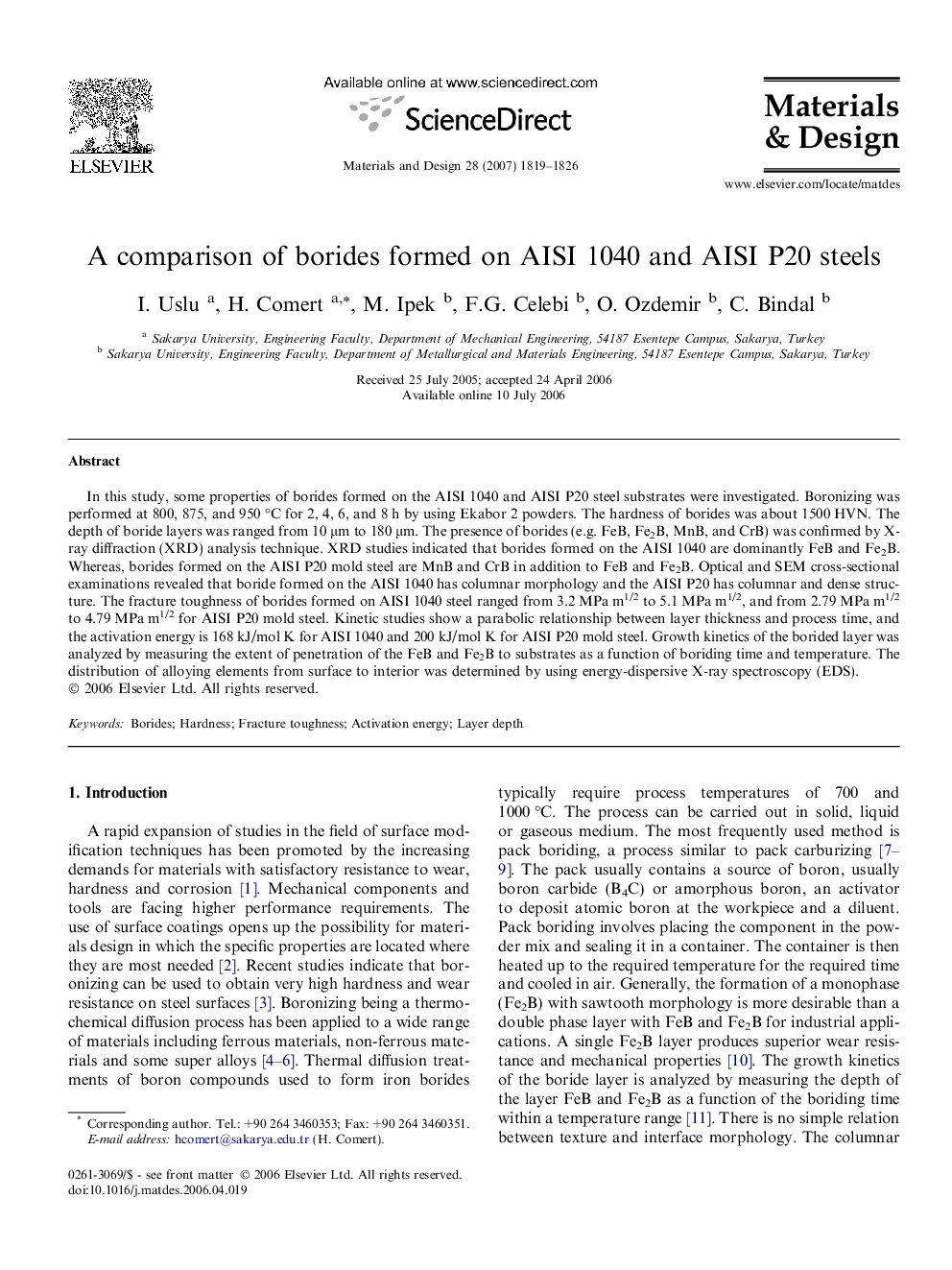| Article ID | Journal | Published Year | Pages | File Type |
|---|---|---|---|---|
| 833621 | Materials & Design (1980-2015) | 2007 | 8 Pages |
In this study, some properties of borides formed on the AISI 1040 and AISI P20 steel substrates were investigated. Boronizing was performed at 800, 875, and 950 °C for 2, 4, 6, and 8 h by using Ekabor 2 powders. The hardness of borides was about 1500 HVN. The depth of boride layers was ranged from 10 μm to 180 μm. The presence of borides (e.g. FeB, Fe2B, MnB, and CrB) was confirmed by X-ray diffraction (XRD) analysis technique. XRD studies indicated that borides formed on the AISI 1040 are dominantly FeB and Fe2B. Whereas, borides formed on the AISI P20 mold steel are MnB and CrB in addition to FeB and Fe2B. Optical and SEM cross-sectional examinations revealed that boride formed on the AISI 1040 has columnar morphology and the AISI P20 has columnar and dense structure. The fracture toughness of borides formed on AISI 1040 steel ranged from 3.2 MPa m1/2 to 5.1 MPa m1/2, and from 2.79 MPa m1/2 to 4.79 MPa m1/2 for AISI P20 mold steel. Kinetic studies show a parabolic relationship between layer thickness and process time, and the activation energy is 168 kJ/mol K for AISI 1040 and 200 kJ/mol K for AISI P20 mold steel. Growth kinetics of the borided layer was analyzed by measuring the extent of penetration of the FeB and Fe2B to substrates as a function of boriding time and temperature. The distribution of alloying elements from surface to interior was determined by using energy-dispersive X-ray spectroscopy (EDS).
